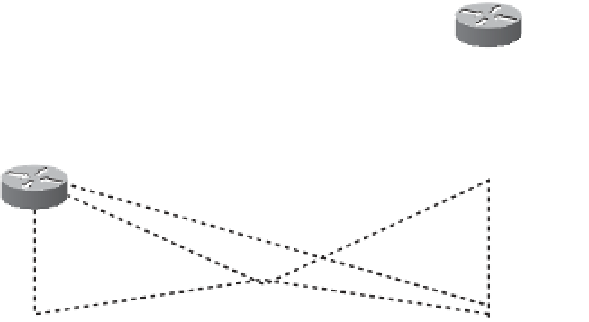Information Technology Reference
In-Depth Information
the attribute locally. If the path attribute is nontransitive, the router does not have to ad-
vertise the route to its peers.
The following subsections cover each attribute category.
Next-Hop Attribute
The next-hop attribute is the IP address of the next IP hop that will be used to reach the
destination. The next-hop attribute is a well-known mandatory attribute.
Local Preference Attribute
The local preference attribute indicates which path to use to exit the autonomous system.
It is a well-known discretionary attribute used between iBGP peers and is not passed on
to external BGP peers. In Cisco IOS software, the default local preference is 100. The
higher local preference is preferred.
The default local preference is configured on the BGP router with an external path; it then
advertises its local preference to internal iBGP peers. Figure 11-13 shows an example of
the local preference attribute where Routers B and C are configured with different local
preference values. Router A and other iBGP routers then receive routes from both Router B
and Router C. Router A prefers using Router C to route Internet packets because it has a
higher local preference (400) than Router B (300). The arrows represent the paths taken to
go out of the autonomous system.
AS 300
Internet
AS 200
Router D
s0: 2.2.2.1
Router E
s0: 3.1.1.1
AS 100
iBGP
Router C
1.3.1.1
local pref = 400
Router B
1.2.1.1
local pref = 300
Router A
1.1.1.1
Figure 11-13
BGP Local Preference
Origin Attribute
Origin is a well-known mandatory attribute that defines the source of the
tion. Do not confuse the origin with comparing whether the route is
(eBGP) or








